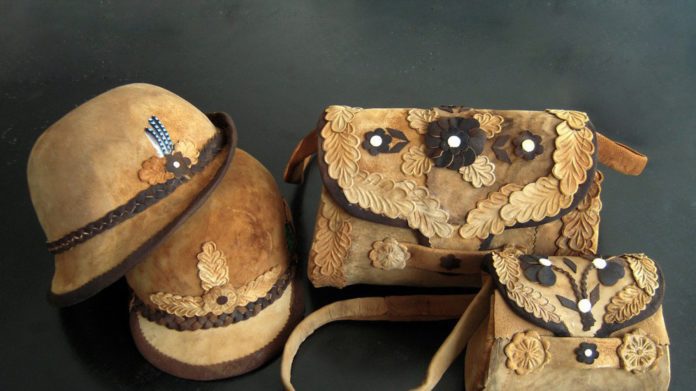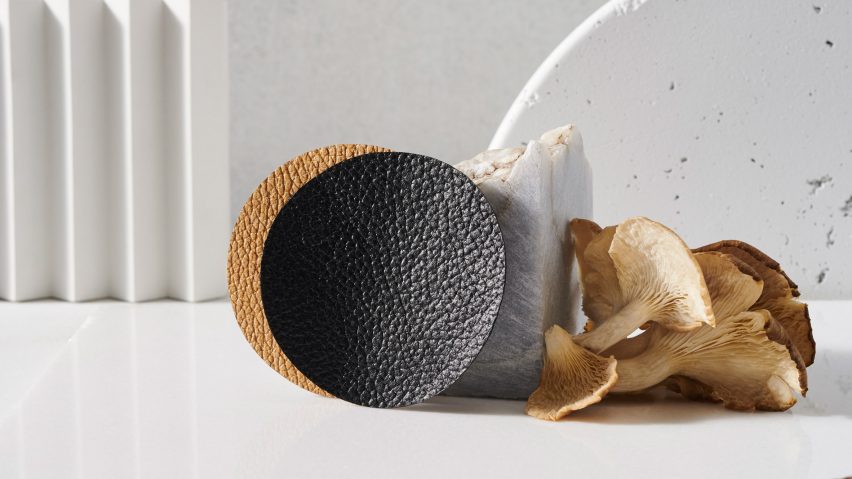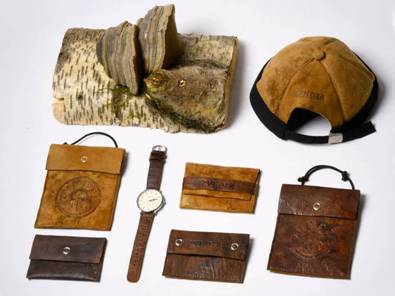Every fashion-lover holds “genuine leather” in one of their highest regards when it comes to clothes or accessories. But for ages, leather has meant animal leather, and at a time when scientists and innovators are trying to come up with solutions for the climate crisis and animal rights groups are crying foul, an increasing number of fashion designers turning to plant-based leather as a viable and more humane option.
Studies have shown that livestock makes up nearly 15 percent of the globe’s greenhouse gas emissions. Not only that, large-scale deforestation is connected to animals raised for leather and meat.
As a result, bovine leather wreaks more havoc on the environment than even plastic-based leather. This is where the concept of mushroom leather came into play and is currently reshaping the world of sustainable fashion.
Also Read: The Role of Sustainability In The Fashion Industry- How is it Evolving?
Origin of Mushroom Leather
Danish product designer Jonas Edvard developed organic mushroom textile in 2013, for which he used mushroom spores and plant fibers.
The material was called MYX, derived from mycelium – a vegetative part of a fungus, which consists of a network of fine white filaments. The best thing about mycelium is the fact that it can be grown in almost any kind of agricultural waste.
Edvard discovered that after he had harvested the mushrooms, he could shape and dry out the remaining material. He then started to test out the growing material on various substrates in order to see if it could be standardized and used for multiple applications.
He finally settled on using the fiber mat with a combination of linen and hemp fibers.
Mushroom leather is an environmentally friendly material because it is completely biodegradable and compostable and can be treated without using polluting substances. It also enjoys the advantage of being extremely lightweight and flexible, making it effective for a wide range of products.
MycoWorks, a California-based biotech company, became the latest to create mushroom leather that imitates the look and feel of animal-based leather.
“Reishi, our first product, is a new category of material that is neither animal nor plastic. This type of mushroom leather is the perfect example of art, science, and advanced manufacturing blending to improve supply chains for fashion and luxury,” said Philip Ross, founder of MycoWorks.
Also Read: 6 Effective Ways to Be More Eco-Friendly
How is Reishi created?
MycoWorks creates its material using engineered mycelium cells. According to the company’s website, the cells grow into 3-D structures and become densely intertwined – a Fine Mycelium, which has the strength durability to perform like traditional leather. Since most mushroom leathers are made from compressed solid foam that mycelium creates, it lacks the finesse of other animal and synthetic leathers, and that is where Reishi differs.
After Fine Mycelium is harvested, after being grown in customizable trays in a short amount of time, it can be tanned and finished to look and feel like real animal leather. Reishi is leather that is processed using chromium-free chemicals.
“It’s the first time that a company is able to produce a vegetal product which is matching or even exceeding the quality and durability and aesthetics of a natural one. It’s a super achievement,” Patrick Thomas, former Hermés CEO and a MycoWorks board of directors member said.
What are the most common type of mushrooms to make leather from
Presently, mycelium used in leather comes from commercial oyster mushrooms. However, there are all kinds of materials being made from mushrooms. One such material is MuSkin, which is made from Phellinus Ellipsoideus, a big parasitic fungus that is known to grow in the wild and attack subtropical trees.
Much like MycoWorks, Bolt Threads is another leading mushroom leather manufacturer that is experimenting with a number of different types of fungi. Their most popular leather alternative to date is Mylo. The company has also publicly voiced the benefits of using plant-based leather as opposed to animal leather.
“As disposable incomes rise around the globe, we won’t be able to meet the demand for meat and leather consumer goods by exploiting the animals on this planet. By comparison, the mycelia we grow for Mylo is produced in days, without the resource intensity of raising livestock,” said the company’s spokesman.
Mushroom leather versus animal leather
Being a consumer, you have the right to choose whether you want to opt for something like mushroom leather or continue to depend on animal-based leather when it comes to fashion. However, to fully understand how different the two materials are, you need to compare the two and fully take into account the benefits of both.
- Pollution: What you might not realize when donning animal leather is the fact that manufacturing the same creates enormous amounts of pollution. Such a piece of leather goes through a long process of tanning, requiring the use of numerous dyes and chemicals, which are toxic to people and the environment. One of the examples of such a substance is Chromium – a metal that makes its way into the water, air, soil, and food, contaminating communities. It is known to cause liver failure, kidney damage, and lung cancer, among other illnesses. Then there are the toxic fumes created by tanning animal leathers. In fact, air and the soil around the tanneries, which were earlier covered by plant life, are now home to acidic foam.
- Inhumane: Even if you are not an animal lover, you have to feel for the senseless slaughter of creatures for the sake of fashion. Killing animals to just use their skin for apparel presents serious ecological and ethical issues – something that organizations like the People for the Ethical Treatment of Animals (PETA) have religiously rallied against for ages and continue to do so. In their efforts, they have launched an explosive investigation into animal rights violations allegedly being committed by brands like Louis Vuitton and Gucci. They have accused the companies of selling bags, belts, and wallets made from snakes and lizards that were cruelly killed, including being beheaded and skinned alive.
- Resources: Research has shown that the meat industry uses roughly about 30 percent of the world’s land that is not covered by ice for cattle production, the United Nations Food and Agriculture Organization has reported. Also, one-third of the world’s freshwater goes towards rearing the animals, which creates one-fifth of the world’s greenhouse gas emissions. Such a large-scale expenditure in terms of harmful chemicals, water, or energy is not incurred when it comes to growing mushroom leather.
- Recycling: Unlike animal leather, mushroom leather and its substrate can be recycled and reused time and again. Since it can be treated as post-consumer waste, it enjoys a considerable advantage over its animal counterpart.
- Manufacture: The time difference between procuring the raw materials to manufacture animal and mushroom leather has no comparison. Consider the fact that it takes years to raise cattle to a decent size, which can be skinned to be used for making leather. Compared to that, mushrooms being fungi, only take a couple of weeks to grow exponentially enough to be turned into alternate leather.





